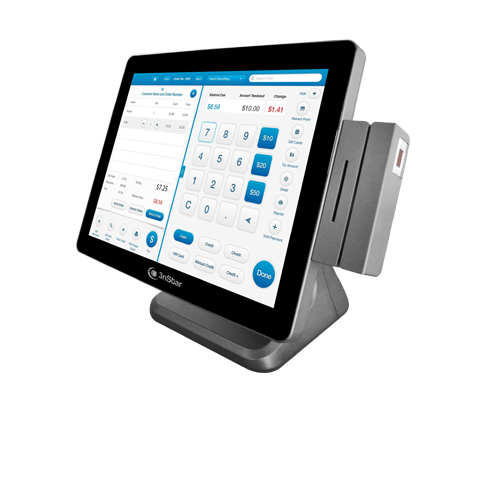Exactly How POS System Functions: A Comprehensive Guide for Entrepreneur

Understanding the Components of a POS System

How Sales Transactions Are Refined
When a customer determines to purchase, the sales purchase launches a collection of organized actions within the POS system. Initially, the cashier inputs the products being purchased, which are checked via a barcode viewers or by hand gotten in. This action retrieves item information, consisting of prices and appropriate taxes, from the system's database.Next, the consumer is provided with the overall quantity due. The POS system then refines the repayment, whether via money, charge card, or mobile payment techniques (Restaurant POS Software). For electronic repayments, the POS securely connects with repayment processors to license and validate the transaction.Once the repayment is confirmed, the system generates a receipt, which can be printed or sent out digitally. This invoice offers as proof of purchase for the customer. The purchase information is tape-recorded in the system, ensuring accurate sales records and financial tracking for the business.
Supply Management and Tracking

Efficient supply management and tracking are essential parts of a POS system, as they guarantee that services preserve optimal stock degrees and minimize discrepancies. A robust POS system permits real-time supply updates, mirroring sales and returns immediately. This enables company owner to check supply degrees accurately, ensuring that prominent items are easily offered while avoiding overstocking of less popular products.Additionally, progressed POS systems supply features such as automatic stock signals and reorder ideas, enhancing the procurement process. Barcoding and RFID technology improve precision in tracking inventory movement, reducing human mistake. Extensive reporting tools provide insights right into supply turn over rates, helping organizations make educated decisions regarding purchasing and item offerings. Eventually, efficient inventory management through a POS system not only boosts operational effectiveness however additionally boosts consumer contentment by ensuring item schedule.
Analyzing Consumer Information and Insights
Consumer data analysis offers as an effective tool for companies utilizing a POS system (Restaurant POS Software). By checking out and gathering purchase data, companies can uncover beneficial understandings about customer actions and choices. This evaluation allows them to recognize buying trends, peak buying times, and prominent items, thus informing inventory decisions and marketing strategies.Additionally, services can segment their client base, permitting customized marketing initiatives that deal with certain demographics or buying habits. Recognizing client commitment patterns additionally aids in developing targeted benefits and promotions programs.The information gleaned from a POS system can additionally reveal understandings into consumer comments, enabling companies to make informed choices pertaining to product offerings and solution enhancements. Inevitably, leveraging customer information properly can enhance the general buying experience, foster customer fulfillment, and drive revenue growth
Advantages of Carrying Out a POS System

Frequently Asked Inquiries
What Types of Companies Can Benefit From a POS System?
Various businesses take advantage of a POS system, including stores, restaurants, beauty salons, and shopping platforms. These systems improve transactions, stock monitoring, and customer data, boosting functional efficiency and improving customer experience throughout varied sectors.
Just how much Does a POS System Normally Expense?
The price of a POS system commonly varies from a few hundred to several thousand bucks, depending upon features, more info hardware, and software. Organizations must consider ongoing costs for assistance, maintenance, and deal processing when budgeting.
Can I Incorporate a POS System With Existing Software?
Incorporating a POS system with existing software program is often possible. Lots of systems supply APIs or integrated compatibility functions, permitting businesses to improve operations and enhance capability by linking different software program applications effectively.
What Training Is Needed for Team to Utilize a POS System?
Educating for staff to utilize a POS system normally consists of understanding software capabilities, refining deals, handling stock, and dealing with consumer communications. Practical demos and hands-on session boost effectiveness and self-confidence being used the system efficiently.
What Occurs if the Web Goes Down While Using a POS System?
Deals may be disrupted if the web goes down throughout POS system usage. Many systems supply offline capacities, allowing basic operations to proceed, but complete performance, including real-time supply updates, will be limited. A Factor of Sale (POS) system is made up of a number of crucial elements that function together to manage and facilitate deals service operations. Reliable stock monitoring and monitoring are important parts of a POS system, as they guarantee that services maintain perfect stock levels and reduce discrepancies. Consumer information evaluation offers as an effective tool for organizations utilizing a POS system. Comprehending consumer commitment patterns additionally helps in creating targeted incentives check here and promotions programs.The information gleaned from a POS system can also disclose insights into consumer comments, enabling companies to make educated decisions relating to item offerings and service enhancements. Implementing a POS system uses countless advantages that can considerably enhance organization procedures.